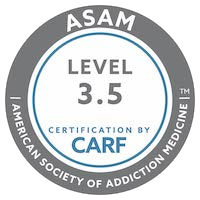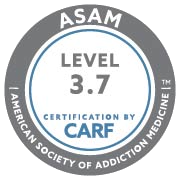Relapse can be avoided if a person is honest with their doctor about their addiction. For people in recovery, doctors will often prescribe non-habit-forming medications.
Did you ever accidentally stubbed your foot and found the pain disappears after a few minutes? Have you ever broken an arm or leg and felt the pain? It can make your life difficult and can even be overwhelming to manage.
Specific pains require immediate attention. For example, if you have persistent chest or back or nerve pain or feel like you are unable to focus on anything else, you should seek attention. It can be very difficult to manage oral pain.
For those who are recovering from drug addiction, these sources of pain can prove to be a problem. People suffering from addiction turn to prescription drugs for pain relief and to help them cope with their daily lives. It can be difficult for people in recovery to figure out how they will manage their pain. However, there are many ways that one can handle it and remain clean.

What is Addiction?
Addiction does not simply refer to the fact that someone needs a drug. It’s more than that they desire it or believe they need it. Addiction means that you use a drug when your body, mind, and social interactions are all in disarray.
Addiction is a severe disease that causes the addict to go to extreme lengths to obtain their drug of choice. This could mean theft, mental disorders or even putting the lives and health of others at risk.
Pain Management and Addiction Treatment
For someone who is in recovery, pain can be very frightening and intense. This is because they likely expended a lot of energy and resources to get there. The problem with addiction is that, even if a person quits using a drug, they still feel a strong desire to use it again. According to the American Society of Addiction Medicine “addiction is progressive”, so drug use can become more severe after a person relapses.
Drugs that can trigger a relapse
A person in recovery might feel euphoric after taking pain medication. This is because their brain may crave more or more powerful drugs. Relapse can be caused by drugs that are not prescribed. For example, someone who has been addicted to opiates might relapse after using tramadol.
The National Institute of Drug Abuse explains that tramadol, a pain reliever, has low addiction potential. However, the mild “high” it gives can cause a relapse and trigger the need to get a stronger “high”.
People in recovery are well aware that drugs can lead to relapse and they often disregard the urge to take more than prescribed. What drugs are safe and which are not? Relapse can occur when you don’t know what drugs could trigger a trigger.
A trigger can be caused by prescribed painkillers even if an individual suffers from alcoholism. They are unable to control their feelings of discomfort and ease, so they may not know what drugs could cause it. The real question is: When do you need to take prescription painkillers?
What is the best way of relapse prevention therapy?
Potential drug abuse is something that professionals are trained to recognize. If a patient comes into a doctor’s office and starts naming the drugs they need, it would be a good indicator of drug abuse, at least from a perspective. Addicts may be aware of these signs and might be more cautious about pursuing drugs.
A good example is the pain scale charts with the smiling faces that hang in doctor’s offices. The first feeling of pain is often “little to none,” while the last, most severe pain is “unmanageable” and “worst ever.”
The pain is usually temporary and does not require any medication. This is called acute pain. Chronic pain can require medication and intervention.
Acute Pain and Chronic Pain Management
Chronic pain is pain that doesn’t go away and acute pain is pain that goes away. A person may be able to manage mild to moderate pain and discomfort with ice packs, elevation, and an over-the-counter drug such as acetaminophen (Tylenol) or something similar.
However, someone who is experiencing chronic pain will need something stronger. Chronic pain can sometimes be treated with a more potent drug. If chronic pain isn’t treated correctly, it can worsen and lead directly to more severe conditions.

How to Manage Pain When You Are in Recovery
Relapse is more common for people in recovery. It is essential to talk to your doctor about any substance addiction. Most likely, the doctor will recommend a minimal amount of relapse prevention therapy oe non addictive relapse prevention therapy treatment. Then wait to see if it works. A doctor may recommend a higher dose or a stronger medication if the drug does not work.
It is always best to continue with your recovery program, and if possible, keep a psychologist informed. You will have someone to turn to for accountability and someone who can help you with your current situation.
How to spot drug-seeking behavior
Doctors are trained to recognize drug-seeking behaviors, as previously stated. Here’s a list from the National Center for Biotechnology Information of some classic drug-seeking behaviors:
- Complaint of 10/10 Pain
- Headache complaint
- Complaints about Back Pain
- Name-based medication
- Complaint of out of medication
- Refill: Chief Complaint
- Request for Parenteral Administration
- Dental pain complaints
- Complaint for 10+ Pain
- Complaint about lost medication
Looking for help with an addiction?

The National Institute on Drug Abuse estimates that 40-60% of drug addicts relapse, much like those with diabetes, hypertension, or asthma. “Drug addiction should be treated as any other chronic illness. Relapse serves to trigger renewed intervention.” It is possible to have difficulty deciding when and how to use pain medication.
However, it is best to tell about your past addictions and recover from them.
One thing is sure: if you’re in recovery, you won’t want to relapse. If you have any questions regarding addiction treatment, please contact Hathaway Recovery center for addiction and relapse prevention therapy immediately.






